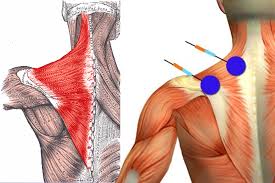

Prolonged laptop use is increasingly linked to neck pain and muscle strain, a phenomenon driven by specific ergonomic and physiological factors.
As per BestForwardHeadPostureFix research team, “Understanding precisely how extended laptop usage leads to these issues requires a step-by-step exploration of posture, anatomy, biomechanics, muscle physiology, and long-term consequences”.
In This Article:
1. Step 1: Ergonomic Limitations of Laptop Design
2. Step 2: Forward Head Posture
3. Step 3: Increased Cervical Load
4. Step 4: Anatomical Impact and Muscle Strain
5. Step 5: Development of Muscle Imbalances
6. Step 6: Reduced Circulation and Oxygen Supply
7. Step 7: Nerve Compression and Neurological Effects
8. Step 8: Scientific Evidence from Research Studies
9. Step 9: Long-Term Consequences
10. Step 10: Preventive Measures and Mitigation
11. Step 11: Clinical Recommendations
12. Step 12: FAQs on How Laptop Use Causes Poor Neck Posture
13. Step 12: Public Health Implications
14. Conclusion
Step 1: Ergonomic Limitations of Laptop Design
Laptops, by their very design, naturally encourage users to adopt poor ergonomic postures. Unlike desktop setups, where you can separately adjust the height and position of screens and keyboards, laptops combine these elements into one compact unit.
While this integration is convenient for portability, it creates a fundamental ergonomic challenge. The ideal ergonomic setup calls for the screen to be positioned at eye level and the keyboard at elbow height, which is nearly impossible with a laptop alone.
Because of this design limitation, users inevitably find themselves making compromises—usually by tilting their heads downward to see the screen clearly. This posture may feel comfortable initially, but over prolonged periods, it significantly stresses the neck muscles and upper spine.
As users maintain this forward-leaning head position, strain accumulates, potentially leading to chronic discomfort or even more severe musculoskeletal issues over time. Adopting external equipment and mindful positioning can mitigate these risks.
Step 2: Forward Head Posture
The common posture resulting from laptop use is known as forward head posture (FHP), a position where the head protrudes forward beyond the shoulders.
Normally, the human head, weighing approximately 10-12 pounds, is aligned directly over the cervical spine, minimizing muscular effort.
However, laptops typically cause users to lean forward, shifting the head’s center of gravity forward and drastically altering cervical biomechanics.
Step 3: Increased Cervical Load
The primary reason forward head posture causes strain is the increased biomechanical load placed on the cervical spine.
According to research from Surgical Technology International, even slight forward tilts significantly magnify the head’s effective weight.
At just 15 degrees, the effective weight increases to about 27 pounds; at 30 degrees, it rises to around 40 pounds; and at a typical laptop-viewing angle of 45 degrees, the load soars to roughly 49 pounds.
To put this into perspective, maintaining a 45-degree tilt is akin to balancing a small child’s weight solely with your neck muscles. This substantial cervical load quickly exhausts neck muscles, leading to muscle fatigue, persistent pain, and stiffness.
Step 4: Anatomical Impact and Muscle Strain
Understanding the anatomy of the neck is crucial in recognizing why these strains occur. The neck is supported by a complex system of muscles, notably:
- Trapezius muscles: Large muscles extending from the base of the skull to the mid-back, assisting in head and shoulder movements.
- Sternocleidomastoid muscles: Prominent muscles responsible for rotating and flexing the head.
- Levator scapulae muscles: Connect the cervical vertebrae to the scapulae, playing a key role in elevating and stabilizing the neck and shoulders.
Prolonged forward head posture forces these muscles to remain continuously contracted to hold the head’s unnatural position, quickly leading to muscle fatigue and chronic discomfort.
Step 5: Development of Muscle Imbalances
Extended periods of forward head posture result in significant muscular imbalances within the neck and upper back.
Muscles such as the sternocleidomastoid and trapezius become hyperactive and overly contracted due to continuous engagement in maintaining the unnatural head position (Janda, 1983).
In contrast, deep cervical flexors, crucial muscles that support the natural curvature and correct alignment of the cervical spine, weaken from prolonged disuse (Falla et al., 2004).
This imbalance doesn’t merely cause temporary discomfort; it significantly contributes to muscle fatigue, persistent soreness, and increased susceptibility to chronic neck pain and dysfunction, potentially affecting overall posture and quality of life (Cagnie et al., 2007).
Step 6: Reduced Circulation and Oxygen Supply
Maintaining a static posture for prolonged periods significantly restricts blood flow to the neck and shoulder muscles.
When muscles remain contracted without adequate movement, blood vessels become compressed, reducing circulation and limiting the delivery of essential oxygen and nutrients.
This lack of sufficient oxygenation rapidly leads to muscle fatigue, stiffness, and discomfort, especially in muscles continually engaged during laptop use.
Additionally, reduced blood flow prevents efficient removal of metabolic waste products, such as lactic acid, which accumulate more quickly under these conditions.
The accumulation of lactic acid contributes substantially to increased muscle soreness, discomfort, and inflammation.
Over time, persistent restricted circulation and sustained muscle tension can lead to chronic muscle pain and stiffness, affecting overall comfort and the ability to perform daily activities effectively.
Step 7: Nerve Compression and Neurological Effects
The cervical spine houses critical nerves extending through the vertebrae into the shoulders, arms, and hands, making it essential for both movement and sensation.
Persistent misalignment due to forward head posture, often associated with prolonged laptop use, compresses these nerves, triggering radiating pain, numbness, or tingling sensations extending into the upper extremities.
According to a study published in the Journal of Manipulative and Physiological Therapeutics (Rubinstein et al., 2007), nerve compression arising from poor posture significantly increases the risk of cervical radiculopathy, a condition characterized by nerve irritation and dysfunction.
Furthermore, research published in Spine Journal (Eubanks et al., 2010) indicates that sustained nerve compression can severely affect mobility and daily functioning, impacting quality of life and productivity.
By understanding these scientifically supported risks, individuals are better equipped to implement preventative measures such as regular posture checks and ergonomic adjustments, reducing the likelihood of developing severe nerve-related conditions.
Step 8: Scientific Evidence from Research Studies
Multiple studies underscore these physiological impacts:
- A study published in the Journal of Physical Therapy Research found prolonged laptop use significantly increased muscle activation in the trapezius and levator scapulae muscles, directly correlating with discomfort and stiffness.
- Research by the National Institutes of Health (NIH) revealed that individuals using laptops for more than four hours daily exhibited notably higher risks of chronic neck pain compared to desktop users with adjustable ergonomic setups.
- According to the International Journal of Occupational Safety and Ergonomics, laptop users who fail to use external keyboards or monitors face higher incidences of musculoskeletal disorders stemming from persistent neck flexion.
Step 9: Long-Term Consequences
Sustained muscle strain and imbalance caused by prolonged laptop use contribute to severe long-term complications:
- Chronic Neck Pain: Continuous strain leads to persistent pain, significantly affecting quality of life and daily activities.
- Postural Deformities: Persistent forward head posture alters spinal alignment over time, commonly resulting in “tech neck,” a visible forward curvature of the cervical spine.
- Accelerated Cervical Degeneration: Excessive strain can accelerate wear and tear, causing conditions such as cervical spondylosis (age-related degenerative changes) and potentially leading to decreased mobility and chronic stiffness.
- Headaches and Migraines: Prolonged neck strain is linked to increased incidence of tension headaches and migraines due to pressure on nerves at the upper cervical levels.
Step 10: Preventive Measures and Mitigation
To mitigate these risks, the following evidence-based ergonomic interventions and lifestyle adjustments are recommended:
- Laptop Stand and External Equipment: Elevate the laptop to eye-level using adjustable laptop stands. External keyboards and mice should be used to maintain appropriate wrist and arm positioning.
- Postural Awareness: Regularly reminding oneself to maintain an upright posture can significantly reduce cervical strain.
- Regular Movement and Breaks: Experts from Harvard Medical School advise taking frequent short breaks—ideally every 15-20 minutes—to change position, stretch, and restore circulation.
- Strengthening Exercises: Incorporating exercises specifically designed to strengthen cervical muscles and improve posture, such as chin tucks, neck retractions, and upper back exercises, supports long-term spinal health.
Step 11: Clinical Recommendations
Clinicians consistently emphasize the importance of early intervention when dealing with the mischievous antics of neck strain caused by prolonged laptop use.
Persistent symptoms such as pain, numbness, or that pesky tingling sensation should never be brushed off as mere annoyances; rather, they are urgent signals from your body begging for professional attention.
Healthcare providers advocate prompt evaluation to pinpoint exactly what’s causing your neck’s rebellion and to prevent minor discomfort from escalating into a full-blown mutiny.
Physical therapy emerges as the knight in shining armor, highly recommended for its remarkable ability to tame unruly muscles and restore harmony to your rebellious cervical region.
Skilled physical therapists craft personalized exercise programs, uniquely tailored to your specific postural misdemeanors, aiming to correct imbalances, strengthen weakened neck muscles, and ultimately restore peace and order to your overworked spine.
Acting swiftly with professional guidance can significantly curb long-term discomfort and preserve your neck’s well-being.
Step 12: Public Health Implications
The increasing prevalence of laptop-related neck strain isn’t just a personal inconvenience; it’s turning into a widespread public health challenge.
With modern trends like remote work and extended online learning becoming the new normal, screen-time is soaring higher than ever.
Recent studies indicate that adults now spend upwards of 8 to 10 hours daily staring at screens, significantly raising the risk of neck and spinal health issues.
It is not just adults either; even children and teenagers are logging extensive hours hunched over devices for schoolwork, entertainment, and social media.
The ripple effect of this digital lifestyle includes not only more frequent musculoskeletal complaints but also increased healthcare costs and reduced productivity.
To tackle this escalating issue, increased public awareness campaigns are essential, alongside targeted workplace ergonomic interventions.
Promoting proper laptop usage techniques, ergonomic equipment, and regular physical activity can collectively help prevent these long-term health consequences, safeguarding public well-being in our digitally dominated age.
FAQs on How Laptop Use Causes Poor Neck Posture
Q-1: Why Does Prolonged Laptop Use Strain Neck Muscles?
A-1: A laptop’s low screen and attached keyboard make you look down while reaching forward with your hands. That combo nudges your head in front of your shoulders and increases the effort your neck muscles need to hold it up. Over time, those muscles fatigue, facet joints feel compressed, and a forward-head habit sets in—especially if you work in long, uninterrupted blocks without moving.
Q-2: How Long Before Laptop Time Becomes A Problem?
A-2: There’s no magic minute, but it’s a “dose plus duration” story. Many people feel tightness after 20–30 minutes of continuous screen time, and risk climbs when daily sitting stretches into several hours. The deeper your neck bend and the longer you hold it, the quicker discomfort shows up. Break long sessions into shorter bouts and add quick resets before stiffness appears.
Q-3: What’s The Biggest Laptop Posture Mistake To Fix First?
A-3: A screen that’s too low. Aim for neutral neck alignment: the top of the display at or just below eye level and centered straight ahead, roughly an arm’s length away. Because the keyboard is attached, raise the laptop on a stand (or sturdy books) and plug in an external keyboard and mouse. This lets your shoulders relax, elbows rest near 90–110°, and your neck stay comfortably upright.
Q-4: Do Micro-Breaks And Simple Exercises Actually Help?
A-4: Absolutely. Short, frequent “movement snacks” unload tissues before they fatigue. Every 20–30 minutes, take 30–60 seconds for neck stretches, thread the needle yoga pose, gentle yes/no head turns, and a few slow breaths. Add a two-minute stand-up or hallway stroll each hour. Little-and-often beats big-and-rare, and it won’t derail your focus the way long, irregular breaks can.
Q-5: What Are The Easiest Tweaks For Daily Laptop Use?
A-5: Elevate the screen, use an external keyboard/mouse, and keep the display straight ahead. Sit with feet grounded, hips slightly higher than knees, and forearms supported. Follow the 20-20-20 rule for eyes (and posture): every 20 minutes, look 20 feet away for 20 seconds. Increase text size and cursor speed to avoid leaning in, switch tasks or positions regularly, and hydrate—small changes add up for your neck.
Final Opinion
In summary, prolonged laptop use strains neck muscles in a cleverly insidious step-by-step saga that begins innocently with ergonomic limitations—because, let’s face it, laptops were clearly not designed with human anatomy in mind.
From there, it’s a slippery slope into forward head posture, where your head rebelliously juts forward like an eager turtle trying to escape its shell.
This forward creep dramatically ramps up cervical loads, placing the weight of a small child on your weary neck muscles.
Next come anatomical stress and muscle imbalances, where certain muscles become divas, hogging the spotlight while others fade silently into weak oblivion.
Restricted circulation then crashes the party, choking oxygen flow and leaving muscles gasping dramatically for nutrients.
Nerve compression jumps into the fray, sending tingling and pain shooting down your limbs, culminating dramatically in long-term musculoskeletal degeneration.
Thus, adopting ergonomic practices, regular movement, strengthening exercises, and timely clinical intervention becomes your heroic quest to rescue neck health in this digital age.
References:


